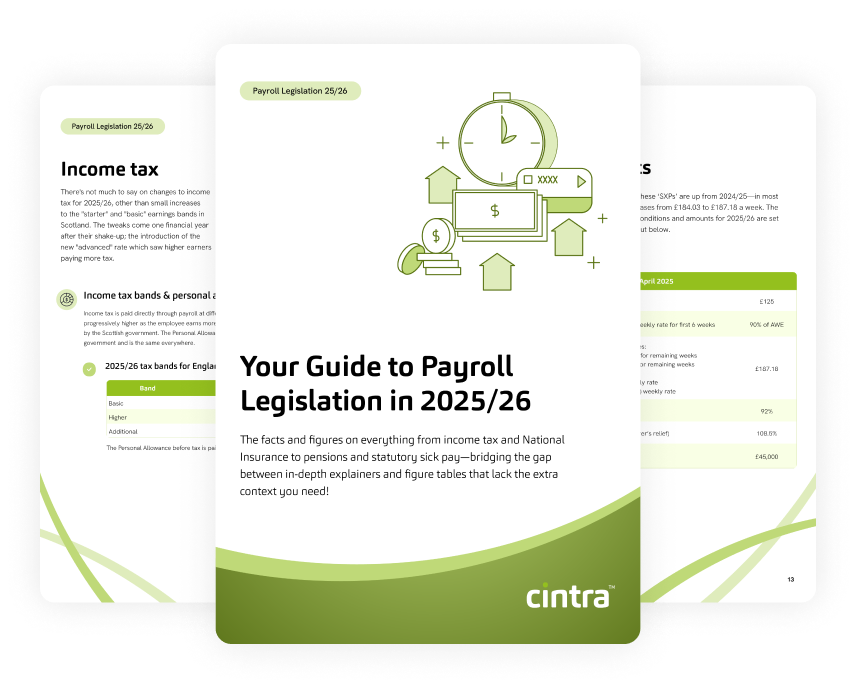Retirement might feel like a lifetime away, but it’s closer than you think. The best way to prepare is by understanding the pensions you’re entitled to. With that in mind, we want to shed some light on the auto enrolment pension process—which is relatively straightforward once you get started.
What is automatic enrolment?
Automatic enrolment (also known as auto enrolment) is a system where employees are automatically signed up for a workplace pension scheme by their employer, with the option to opt out if they choose.
Since 2018, every employer in the United Kingdom must have a workplace pension scheme in place and they must automatically enrol all their eligible employees into it.
Why is automatic enrolment a legal requirement?
Automatic enrolment evolved to protect employees by making sure they get the best financial pre-planning possible to help them prepare for retirement. The Pensions Act 2008 made it a legal requirement for organisations to
- offer a workplace pension,
(And, just as importantly,) - pay into that pension at a required rate.
Now that people know what they’ll be paid, they can plan, budget, and build up their pension, making sure they enter retirement confident that they’ve supplemented their state pension.
Who qualifies for an auto enrolment pension?
To be eligible for an auto enrolment pension, you’ve got to be:
- Aged between 22 and State Pension age
- Earning at least £10,000 per year
- Working in the UK – under a contract of employment OR under a contract to provide work or services as part of someone else’s organisation.
What if you’re not eligible for an auto enrolment pension?
If you earn between £6,240 and £10,000 a year, your employer doesn’t have to automatically enrol you in the pension scheme, but you can still ask to join. If you do, they must let you in and make contributions on your behalf.
It’s enrolment, just without the auto part.
What are the minimum contributions?
A minimum contribution amount is set every year by the government. That’s the minimum total amount that must be paid into the employee’s pension fund and it’s made up of contributions from you and your employer (plus, the government contributes in the form of tax relief).
For 2025/26 the lower limit is £6,240 and the upper limit is £50,270. Let’s break that down a little.
The minimum contribution is:
- 5% from employees (including the government’s tax relief)
- 3% from employers
These are minimum contributions are taken from your ‘qualifying earnings’ before tax or National Insurance contributions are deducted.
Your qualifying earnings include the following list:
- salary
- wages
- bonuses
- overtime
- commission
- statutory sick pay
- statutory parental pay
Some employers base pension contributions on your total earnings, not just qualifying or basic earnings. This means bonuses, overtime, or commission might be included. Check with your employer to find out how much of your earnings will be used for pension contributions each year.
Can you opt-out of an auto enrolment pension?
Automatic enrolment is compulsory, but staying enrolled isn’t. You can opt-out if you want. You might have found a better pension scheme somewhere else, or you might just prefer to invest your money differently.
But remember, if you qualify for it, then it’s automatic—so you’ll have to proactively opt-out.
Whether you opt in or out is up to you. It won’t affect your rights within the organisation or your job in any way.
If you opt out within the first month of being enrolled, any contributions will be refunded. However, in most cases, if you leave the pension scheme more than one month into active membership, you might find that the first contributions have already been taken and will stay in your pension fund. So, if you want out, it’s best to act quickly!
What if you opted out but want back in?
The good news is that you can opt-out at any time, and you can also re-enrol too.
In most contracts you can’t re-enrol more than once every 12 months.
If you opt out, your employer will re-enrol you every three years on the organisation’s staging date if you still qualify. You always have the right to opt out again or re-enrol if you choose.
Get the latest insights and best practice guides, direct to your inbox.
How do employers manage automatic enrolment?
This is where we get to the nitty gritty of managing the process and the ins and outs of handling all the data and calculations to make sure everyone’s sorted.
Automatic enrolment is a great benefit for your workforce, but like all aspects of payroll and contributions, it requires careful handling.
We’ve said it before, and we’ll say it again: getting it right means staying compliant and making sure your people receive the correct pay and pension.
Here are 8 steps to managing your automatic enrolment with efficiency and compliance:
- Know your staging date: First things first. This is the date when your automatic enrolment duties start. Since 2018, every organisation needs to have automatic enrolment in place when they first open.
- Choose a pension scheme: It’s important it meets the requirements for automatic enrolment. You can use a provider that offers a scheme specifically for automatic enrolment, or you can set up your own.
- Communicate with your employees: Let them know about the automatic enrolment process and how it’ll affect them. You’ll need to make your teams aware of the pension scheme you’ve chosen, how much they’ll be contributing, their right to opt out and their right to re-join at a later date.
- Assess your workforce: Know which of your employees are eligible, and which aren’t.
- Enrol your employees: after all the assessing, checking eligibility, providing information, finally you’re ready to sign people up.
- Keep on top of the data: keep accurate, up to date records of your automatic enrolment process, details of employees who have opted out, or opted in. And records of all enrolment communications with employees.
- Keep monitoring eligibility: keep checking enrolments, and calculating all the contributions. For employees who opted out, re-assess them every three years.
- Automate the process: using a provider, or software that supports automatic enrolment, like Cintra, can streamline the process. Automating assessments, contributions, and compliance tracking helps reduce errors and makes sure you stay on top of your legal responsibilities.
The benefits of an auto enrolment pension
There’s plenty to like about an auto enrolment pension. It’s a way of making sure that people are looked after. And if you’re an HR or payroll person, that’s probably a big reason you do your job.
Your pension scheme can be an attractive benefit and a good selling point for your team.
An auto enrolment pension will:
1. Encourage saving
We all know this, if people aren’t saving for the future, they could potentially be left with an inadequate retirement income. Offering automatic enrolment makes it easier for employees to join a workforce pension scheme and protect their future selves.
2. Improve financial security
Those enrolling increase their financial security when they reach retirement. They’ll have a regular income and not just a state pension. Automatic enrolment means people will be able to access an income from their pension pot from the age of 55 (just be aware that in 2028 this will become 57!).
3. Increase employee satisfaction
Providing a good workplace pension is an important benefit for employees which can inspire loyalty and increase job satisfaction. Enhanced contributions can take this one step further. An organisation which contributes above and beyond the legal minimum will definitely be popular with their hires. Some schemes offer fixed percentage contributions, some may match contributions up to a certain level, others offer escalators which gradually increase the percentage of contribution over time. All huge incentives for employees to stay put, keep working, and watch their pension grow.
An auto enrolment pension sends a clear message to employees: we care about your financial wellbeing.
4. Reduce reliance on state pension
An auto enrolment pension means more people have workplace pensions, which reduces the strain on state pensions and makes the overall pension system more sustainable.
Make automatic enrolment work for you
Automatic enrolment is a win-win, but it can be time-consuming—especially if you have many employees.
That’s where payroll software like Cintra comes in. Cintra simplifies the auto enrolment process and does most of the heavy lifting for you.
Want to learn more? Book a demo and see how it can make your life easier.

Payroll Legislation Guide
The facts, figures, thresholds and allowances for 2025/26 spanning tax, National Insurance, pensions, statutory payments and more.
Download now


